15 Easy Cello Solos That Sound Amazing (with links to our easy Cello arrangements)
1.
Elgar - Cello Concerto - 1st movement
Elgar's superlative concerto begins with one of the most celebrated and characteristic melodies in the cello repertoire. The piece is, perhaps, most associated with British cellist Jacqueline du Pré, whose playing career was cut tragically short by the onset of multiple sclerosis at the age of 28.
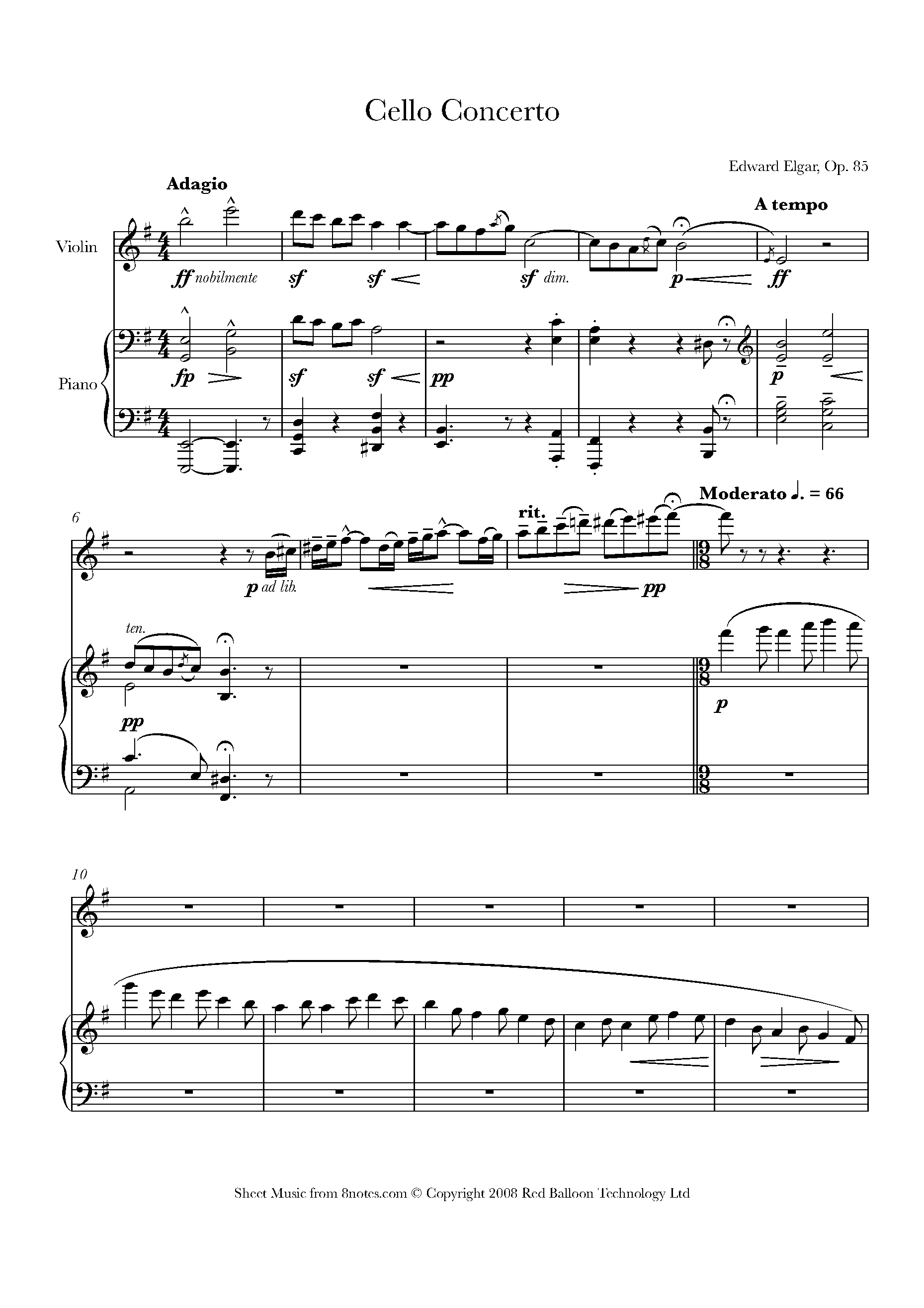
Elgar - Cello Concerto - 1st movement
8notes has two versions of the famous opening movement. A complete (and very difficult!) full version: And a much easier version which contains just this sublime melody. Play it well and you will be sure to bring the house down:
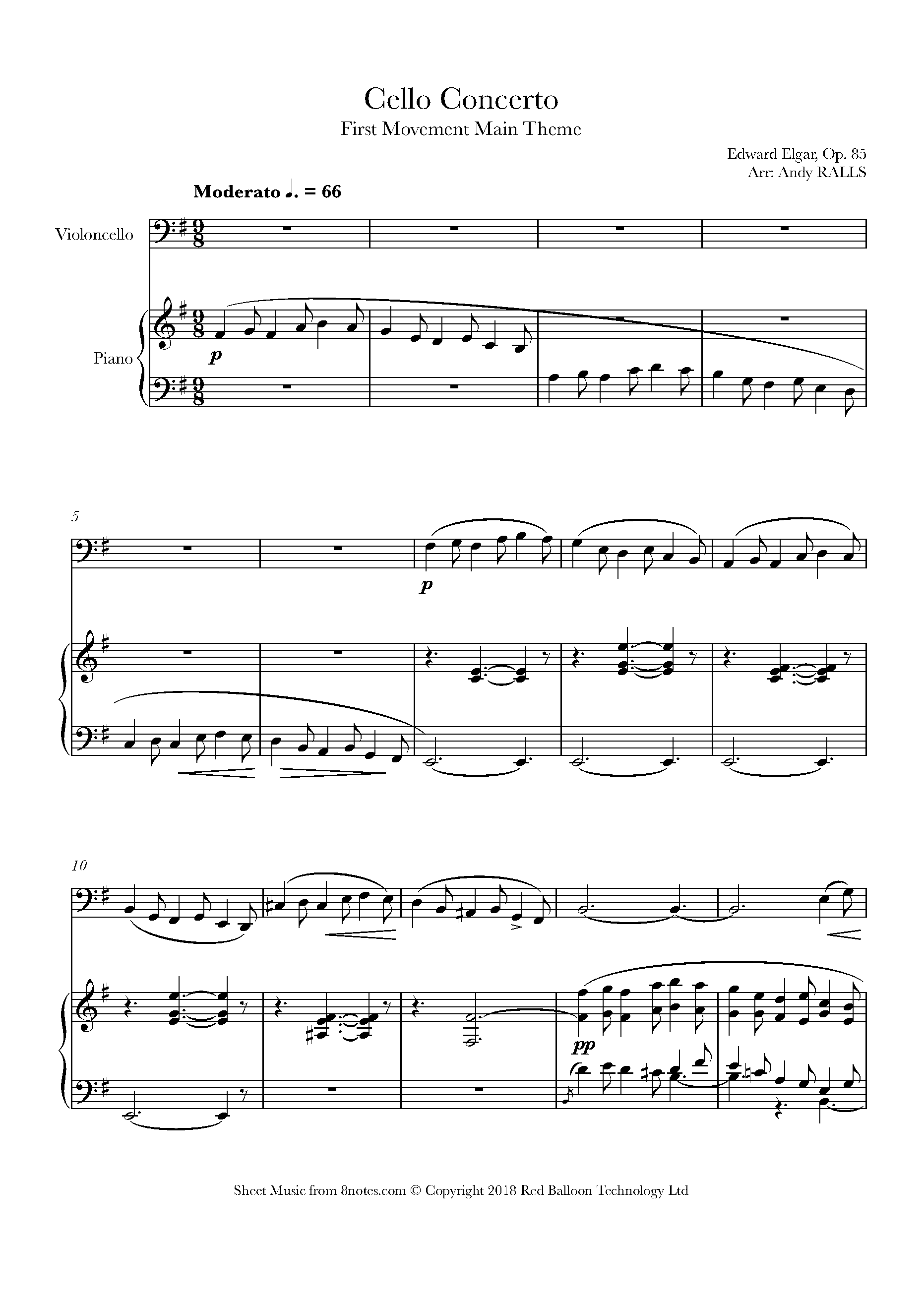
Elgar - Cello Concerto - 1st movement (easy)
2.
Vivaldi - Spring from 'The Four Seasons'
The Four Seasons was already popular before Nigel Kennedy, half-violinist, half rock-star, turned it into a cultural phenomenon in the 90s. Today Spring from 'The Four Seasons' is the quintessential string solo, even though that famous melody is actually played by the whole ensemble:
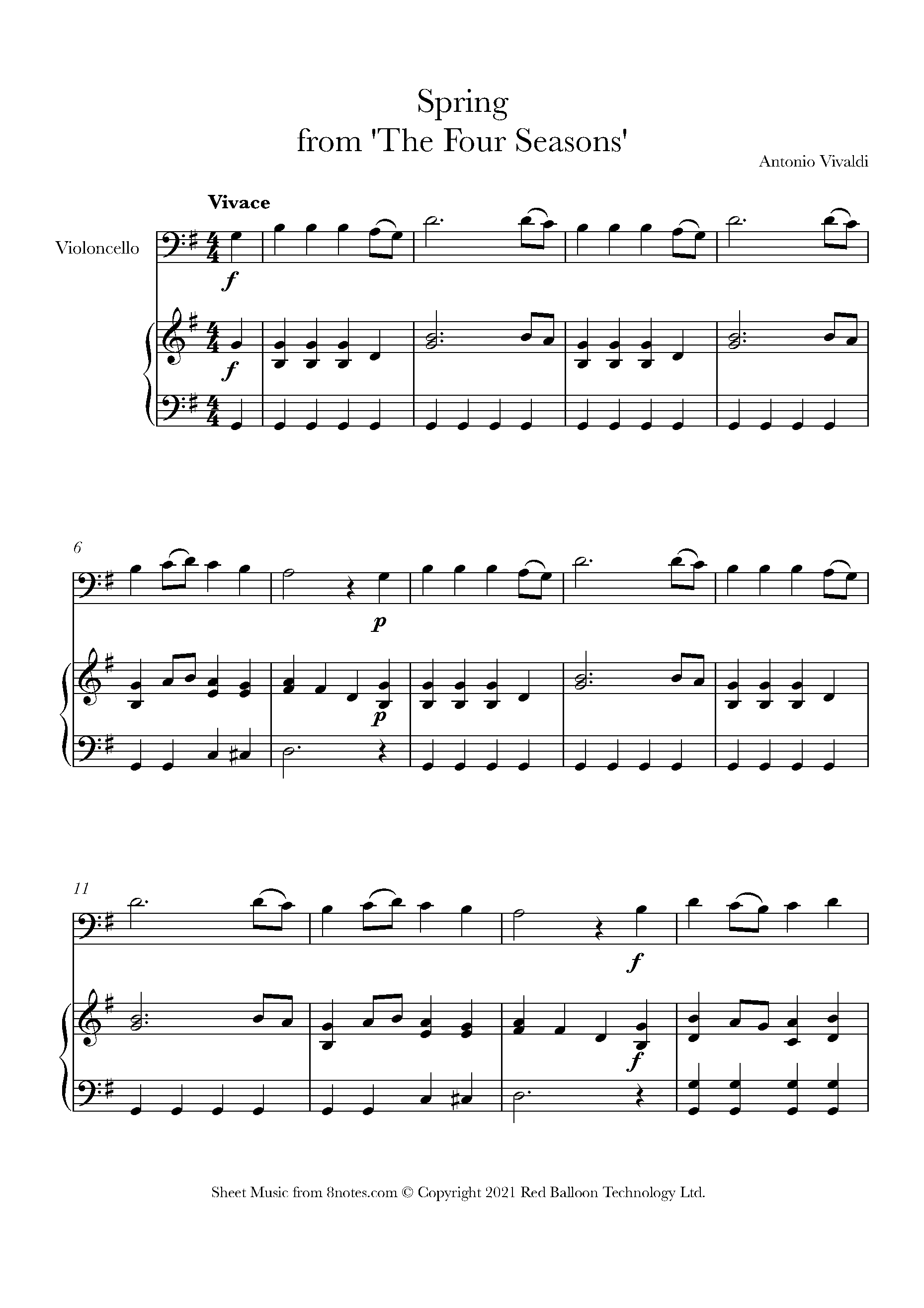
Vivaldi - Spring from 'The Four Seasons'
The should be a feeling of lightness and 'bounce' in this piece. The repeated crotchets (for example, bars 1 and 3) should be a tiny bit detached. Vibrato should also be used rather sparingly, as a little colouring on the longer notes (for example, bars 2 and 4).
3.
When the Saints Go Marching In
This tune became the quintessential New Orleans-style jazz piece, especially as played by Louis Armstrong and his Hot 5 and 7 groups.
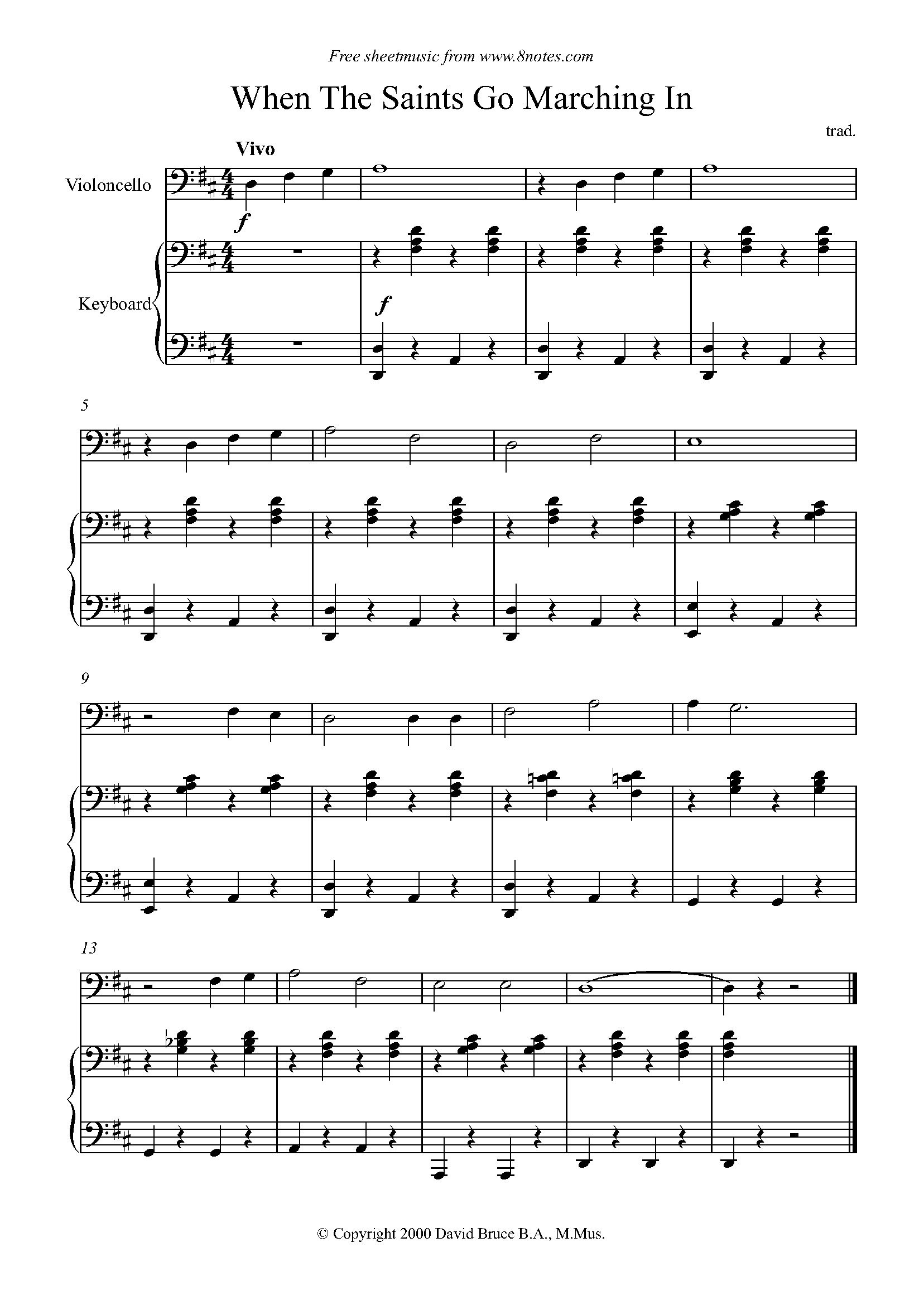
When the Saints Go Marching In
Have fun with it! The rhythmic feel should be very loose - you don't need to play it exactly as notated, it should be felt rather than read. It may be repeated a number of times. You can experiment with the tempo too, perhaps by starting slowly and gradually speeding up.
4.
Saint-Saens - The Swan from Carnival of the Animals
'The Swan' forms the thirteenth and penultimate movement of Saint-Saëns much-loved Carnival of the Animals. It seems to capture the grace both of the animal and of the instrument for which it was written. Listen, for example to Yo-Yo Ma's ravishing performance of it:
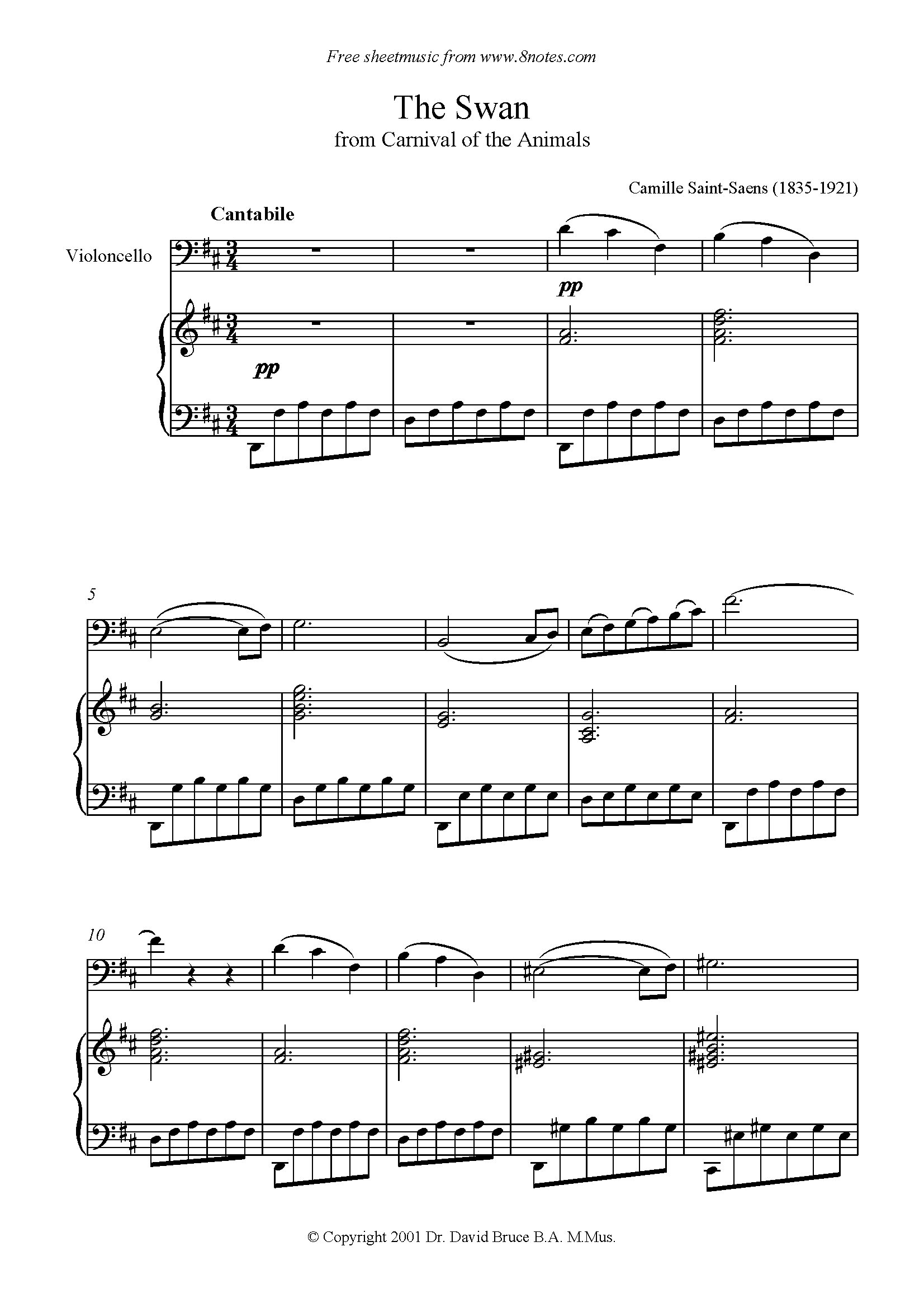
Saint-Saens - The Swan from Carnival of the Animals
The piece may appear deceptively easy but capturing the Ma's sense of effortlessness and sweetness of tone requires thought and practice. Listen, for example, to how often he adds his own dynamic touches - the opening may simply be marked pianissimo, but he diminuendos dramatically at bar 6 before crescendoing as he moves into the higher register at bars 7-9. The higher range of this piece means it is one of the harder works on this list. If you find it too high, consider using 8notes' version in A major (available either as a separate pdf or using the transpose up and down arrows).
5.
House of the Rising Sun
House of the Rising Sun is a traditional folk tune originating from New Orleans, USA. It was made famous by the Animals cover of 1964:
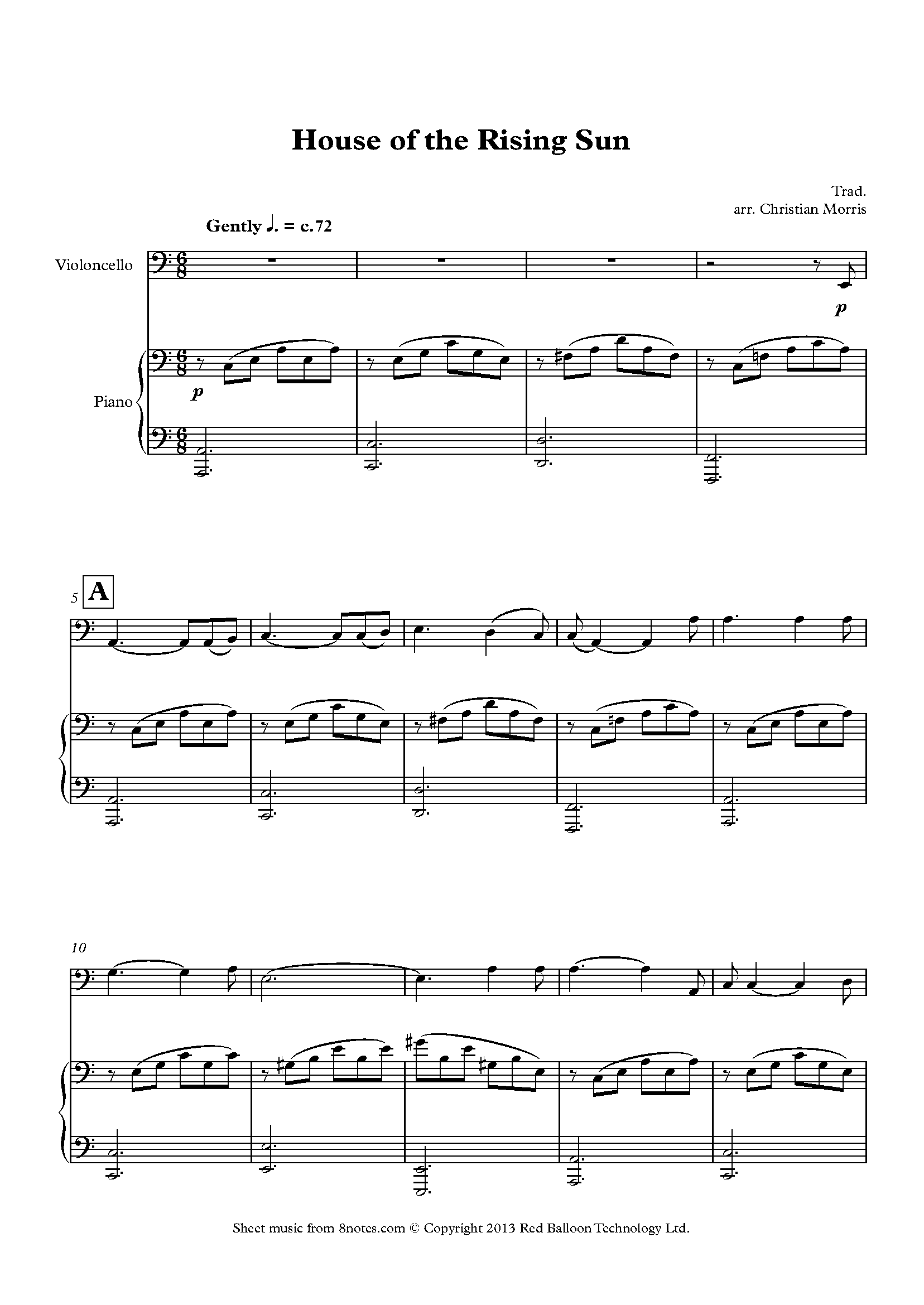
House of the Rising Sun
Listen to the original song before playing - it will help you to work out the phrase structure. Watch out for those duplets at bars 24, 26, 30, 32 and 34 - they should be played evenly against the triplet rhythms in the piano.
6.
David Bruce - Cool Blues
This twelve-bar blues is great for practising your improvising. Listen to this imaginative performance, for example:
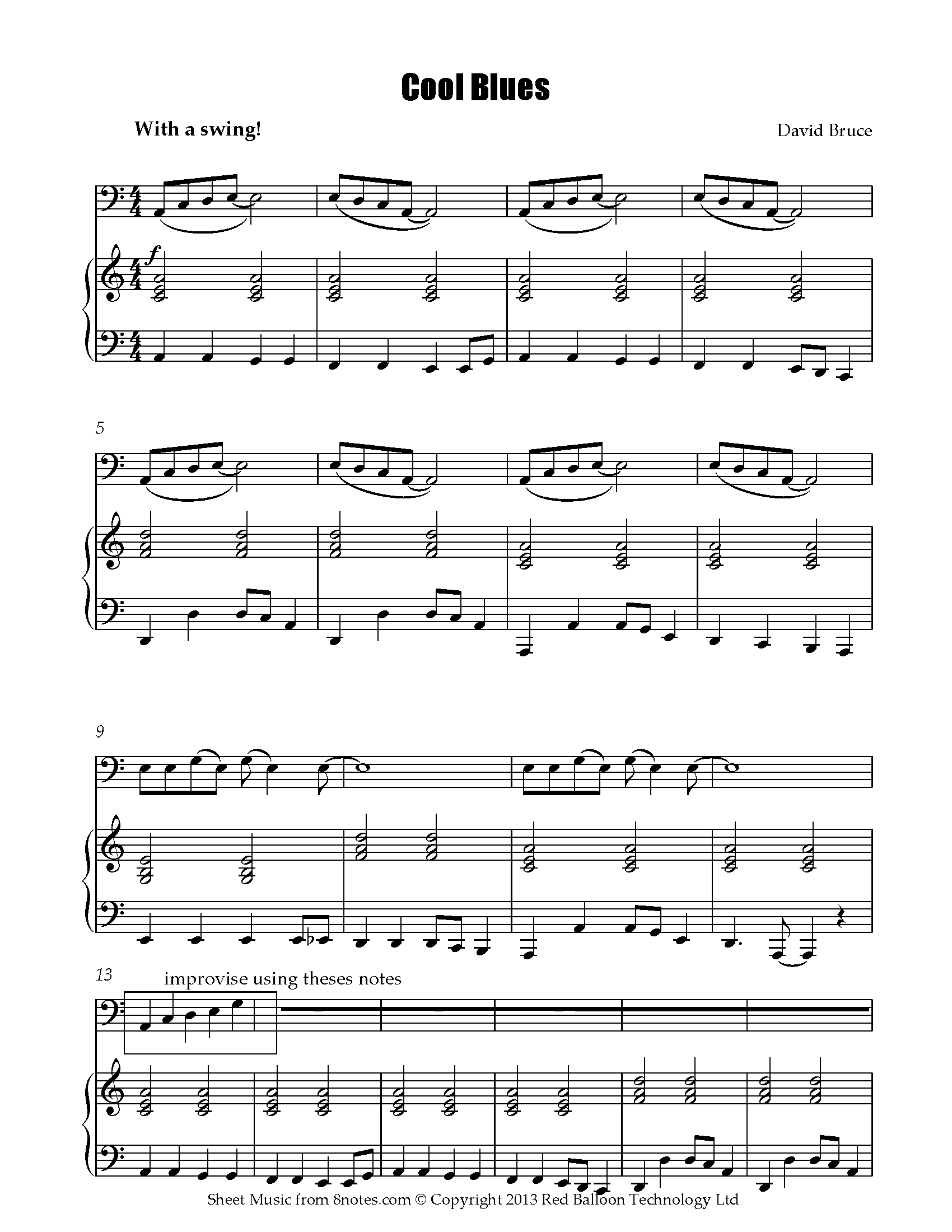
David Bruce - Cool Blues
Notice how the soloist doesn't try to make the improvisation too difficult, instead concentrating on giving it a convincing musical shape, for example by marking its beginning with a long note and saving the highest note for the end.
7.
Beethoven Fur Elise
Originally for piano, the piece adapts beautifully for the cello:
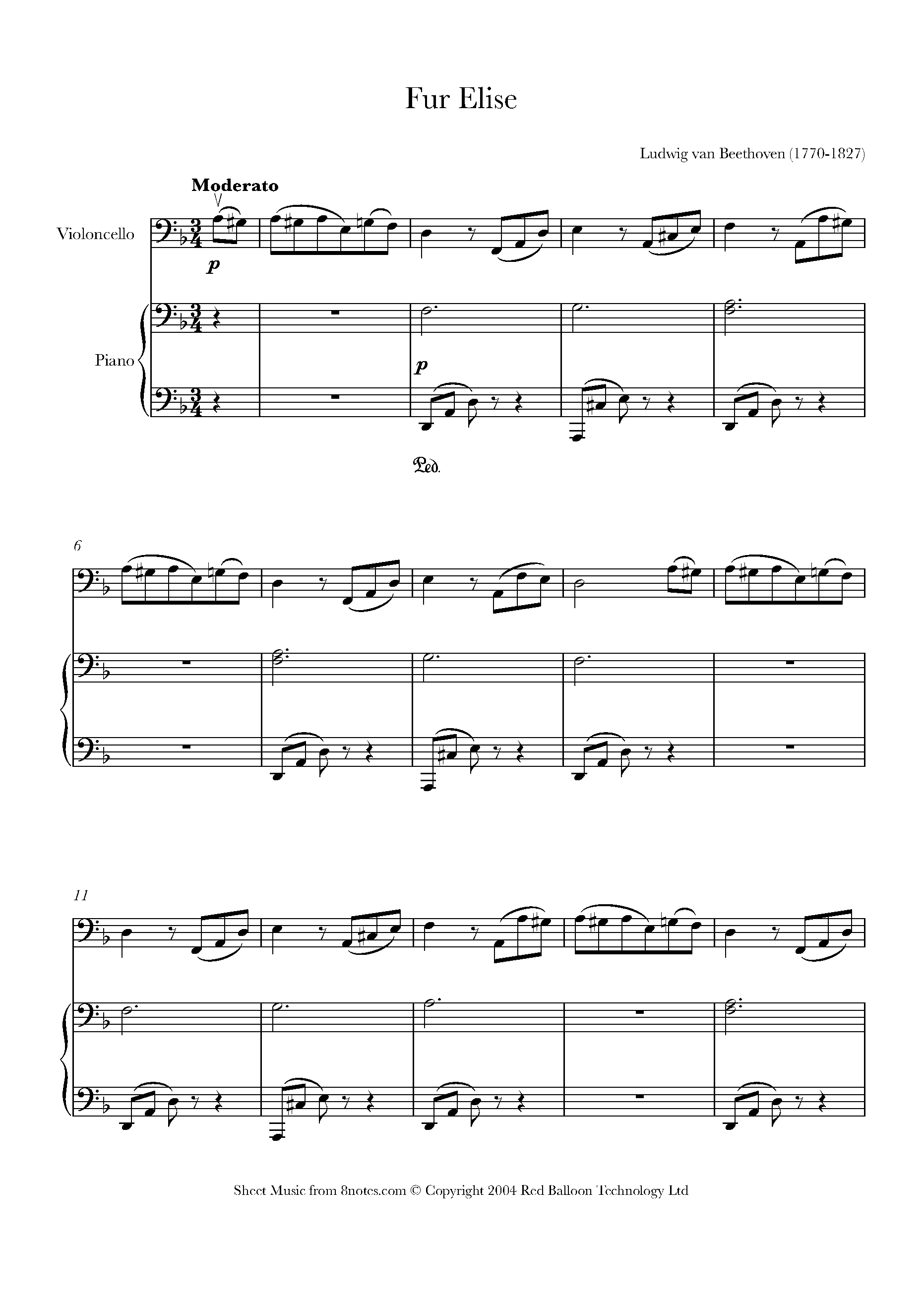
Beethoven Fur Elise
When playing, ensure that the arpeggios split between the piano and cello (for example at bars 2 and 3) join together if they were one flowing movement. The section at bar 18 may be played with more movement. The transition back to the opening material at bars 23 to 24 should be played gradually more slowly before returning to the opening tempo at bar 25.
8.
Pachelbel - Canon in D
Originally written for three violins and basso continuo, it has nevertheless become hugely popular as a solo. The key here is to set a steady tempo at the beginning and stick to it - it gets tricky later on, so if you've started too quickly you will soon regret it!
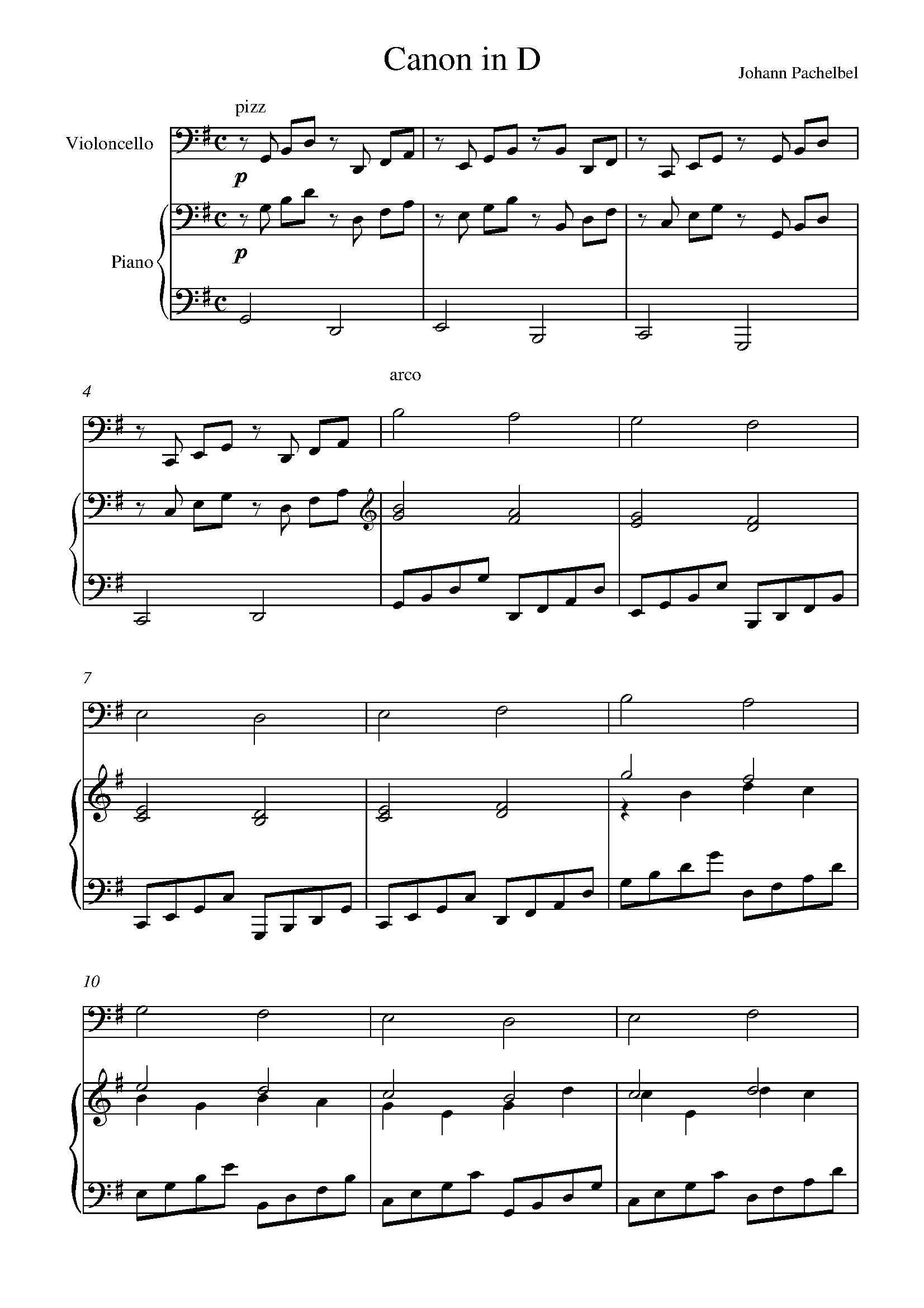
Pachelbel - Canon in D
9.
Hart Wand - Dallas Blues
This Hard Wand's most well-known piece and possibly the first published example of a twelve-bar blues. Like When the Saints it is usually performed in the New Orleans Jazz style:
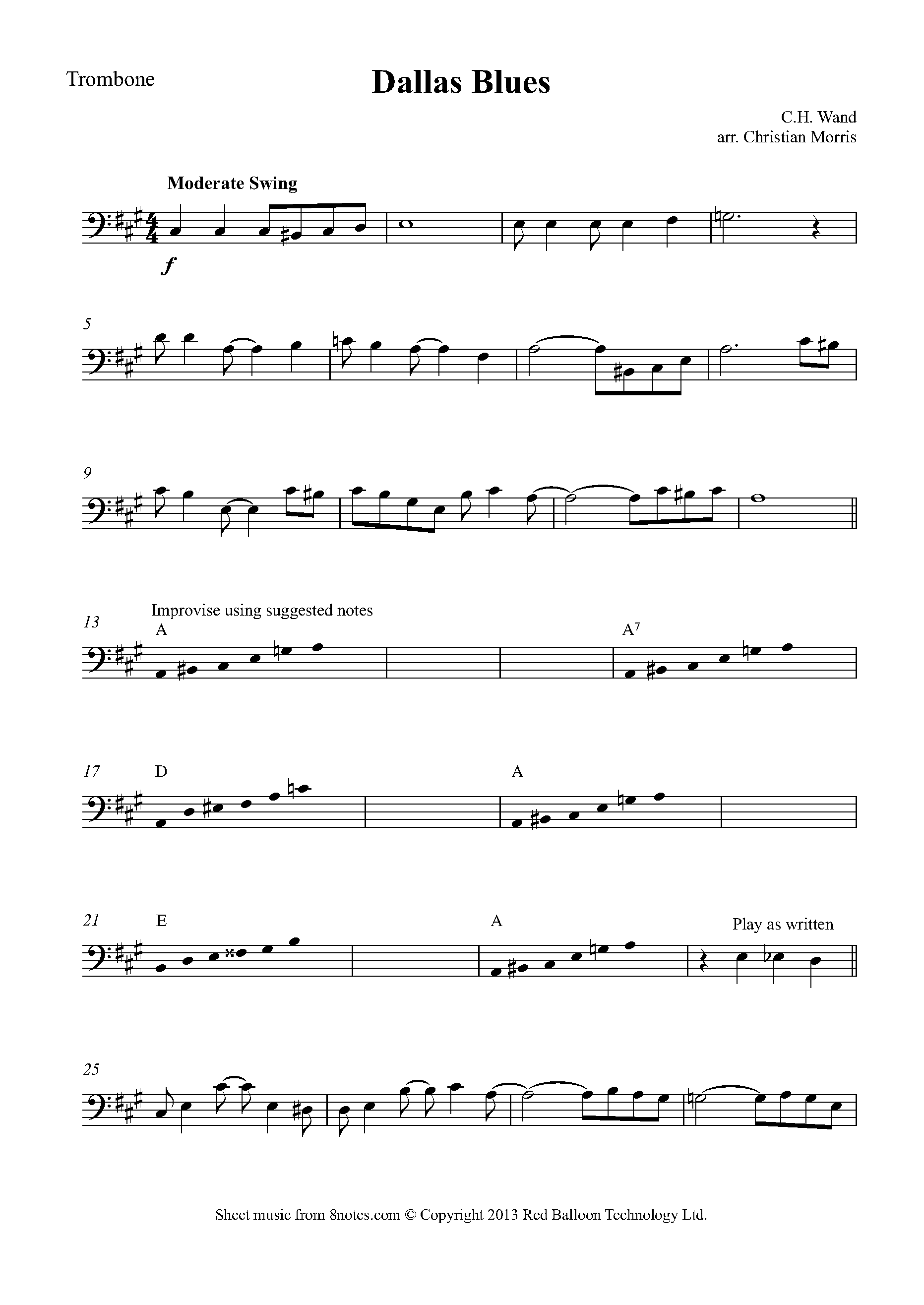
Hart Wand - Dallas Blues
It's another great piece for developing your improvising. Before attempting to play it, listen to the 8notes version, which has a suggested solo from bar 13.
10.
Faure - Elegie
Faure's popular Elegie was written for piano and cello, but later orchestrated by the composer, as you can hear in this performance with Yo-Yo Ma with the Puerto Rico Symphony Orchestra.
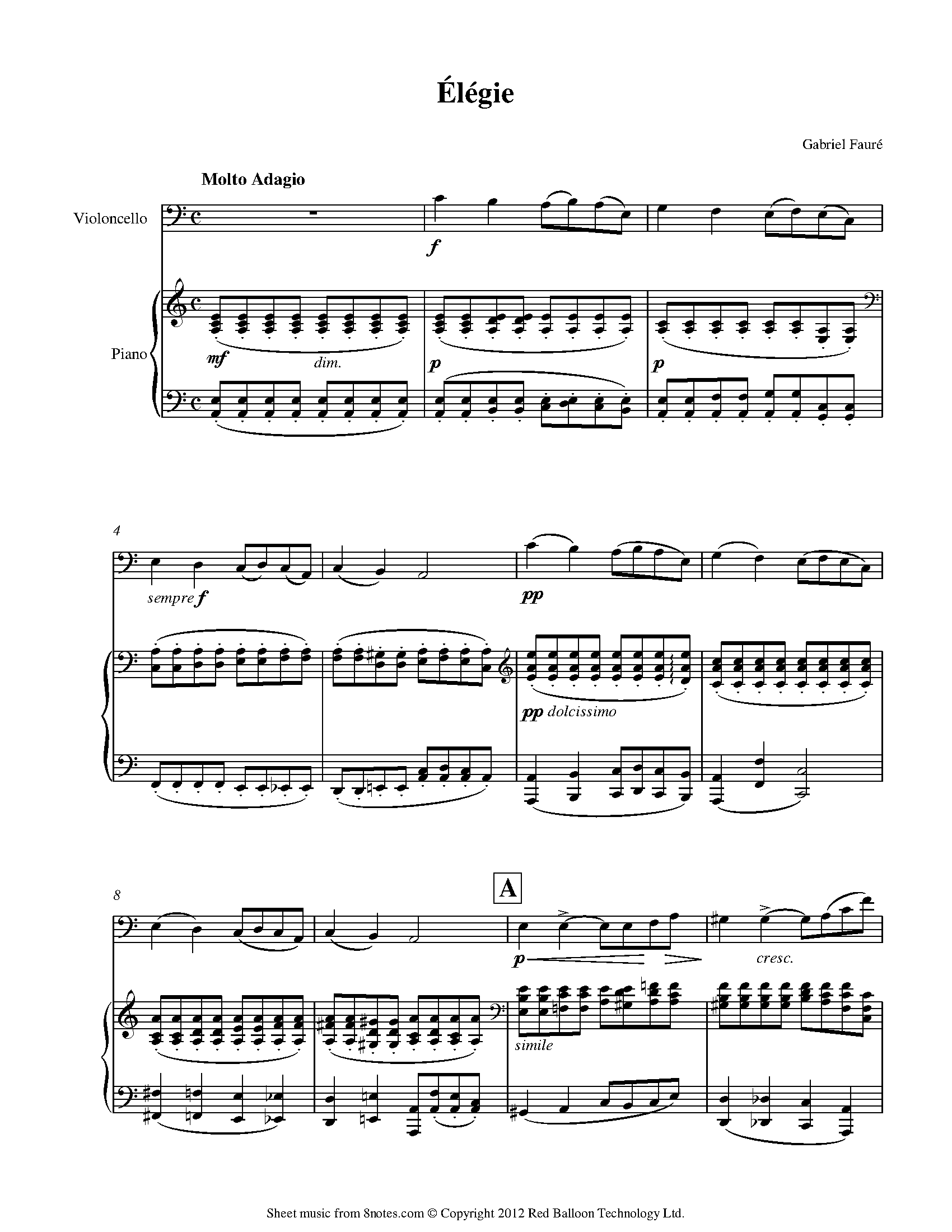
Faure - Elegie
As with 'The Swan' from Carnival of the Animals, listen carefully to Yo-Yo Ma's many imaginative touches and try to imitate them. Again, if you find the piece a little high, consider using the E minor version.
11.
Swan Lake
This is probably the most emotionally-charged melody from Tchaikovsky's famous ballet. It has been widely used in popular culture, perhaps most famously in the final moments of the film Billy Elliot:
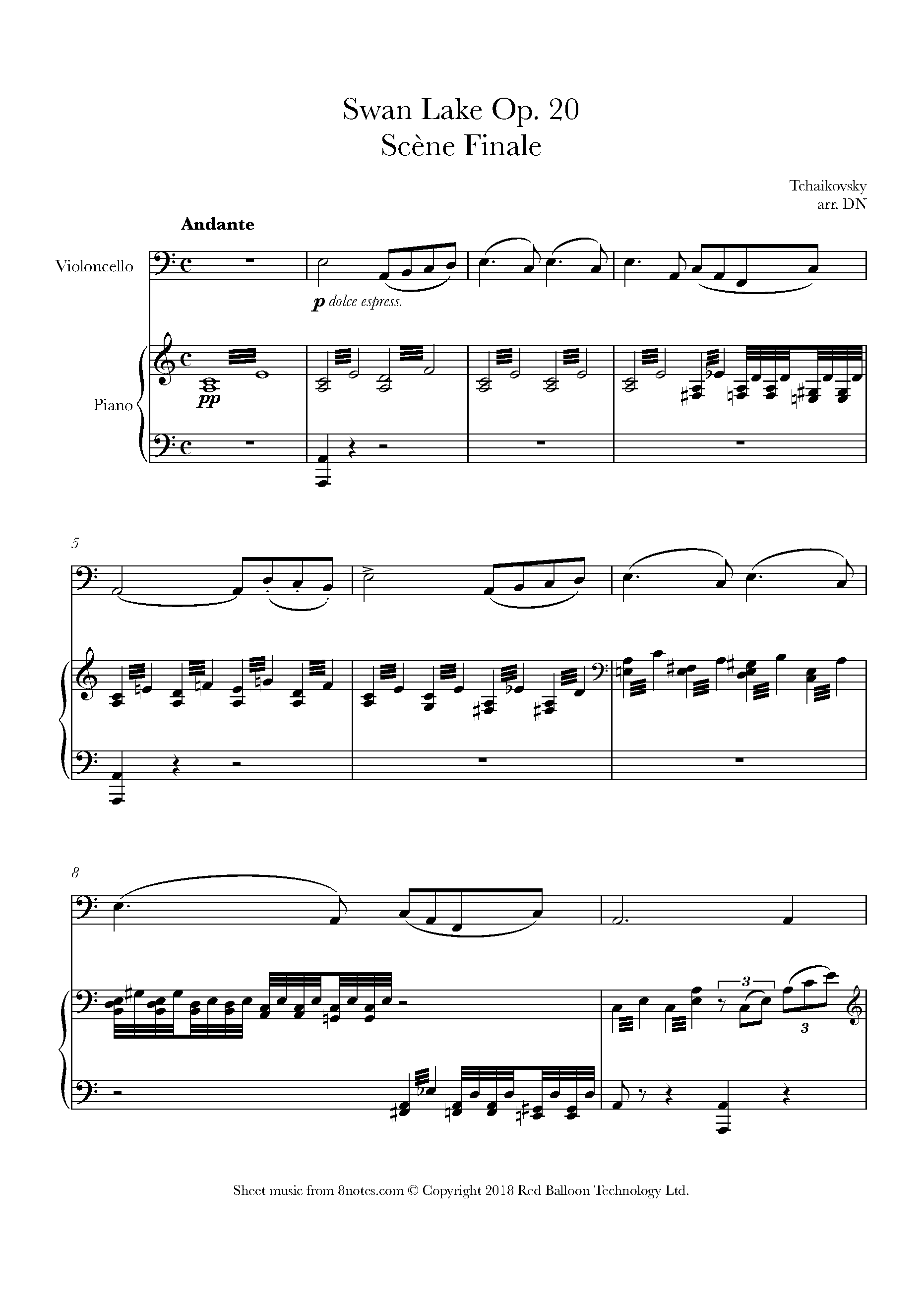
Swan Lake
Expressivity is everything in this beautiful melody. Make sure you observe every slur and articulation mark and leave enough space (i.e. don't start too loud!) for the big crescendo before the climax at B.
12.
Beethoven Moonlight Sonata
The opening of Beethoven's three movement Sonata No. 14 in C# Minor is another work originally written for piano that makes a great cello solo:
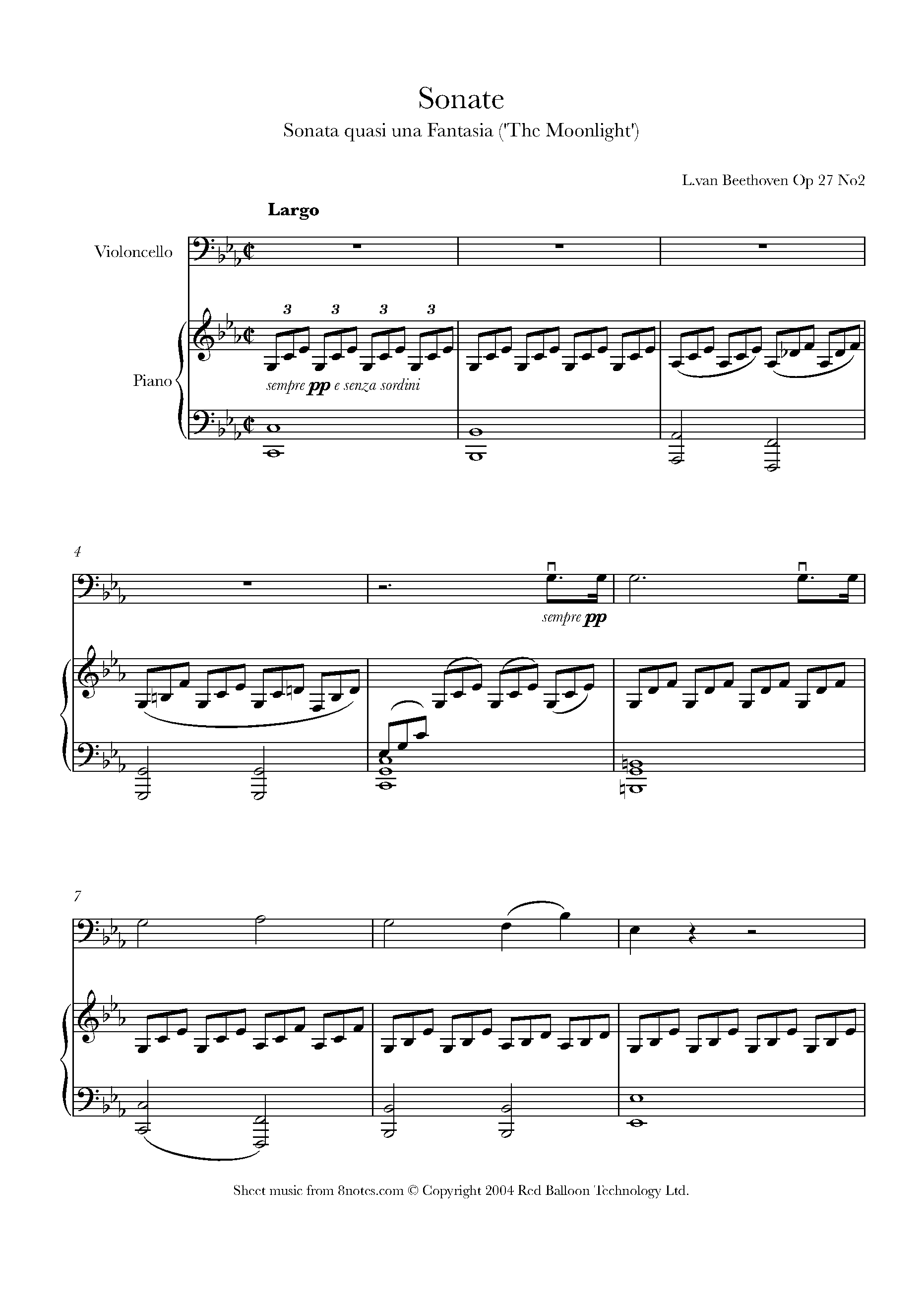
Beethoven Moonlight Sonata
The key here is a smooth bowing arm and a sweet vibrato, especially on those long notes. You can take some liberties with the dynamics. In the video, for example, you will notice the dotted notes (bars 5 and 6) are played quite loudly, with the long notes ebbing and surging in their intensity.
13.
Strauss II - The Blue Danube
Strauss's melody was already hugely popular before Stanley Kubrick's used it in his seminal film 2001. You may also hear it being played as part of the Vienna Philharmonic's New Year's Day concert at the Musikverien, Vienna.
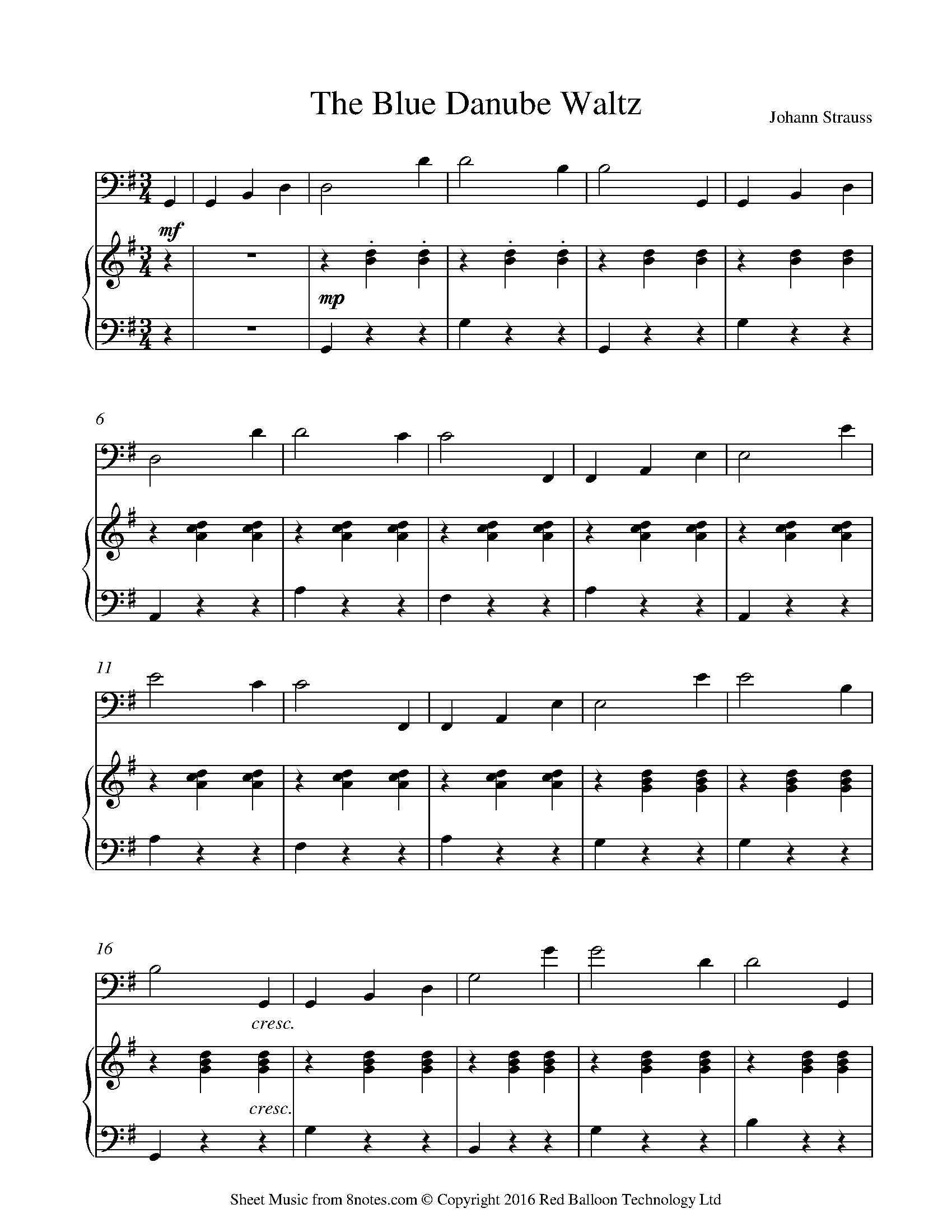
Strauss II - The Blue Danube
If you want to make the piece sound truly Viennese, you might consider playing the second beat a tiny bit earlier than it is notated - one of the defining characteristics of this type waltz.
14.
Amazing Grace
This old Christian Hymn has become immensely popular, both in church and concert hall:
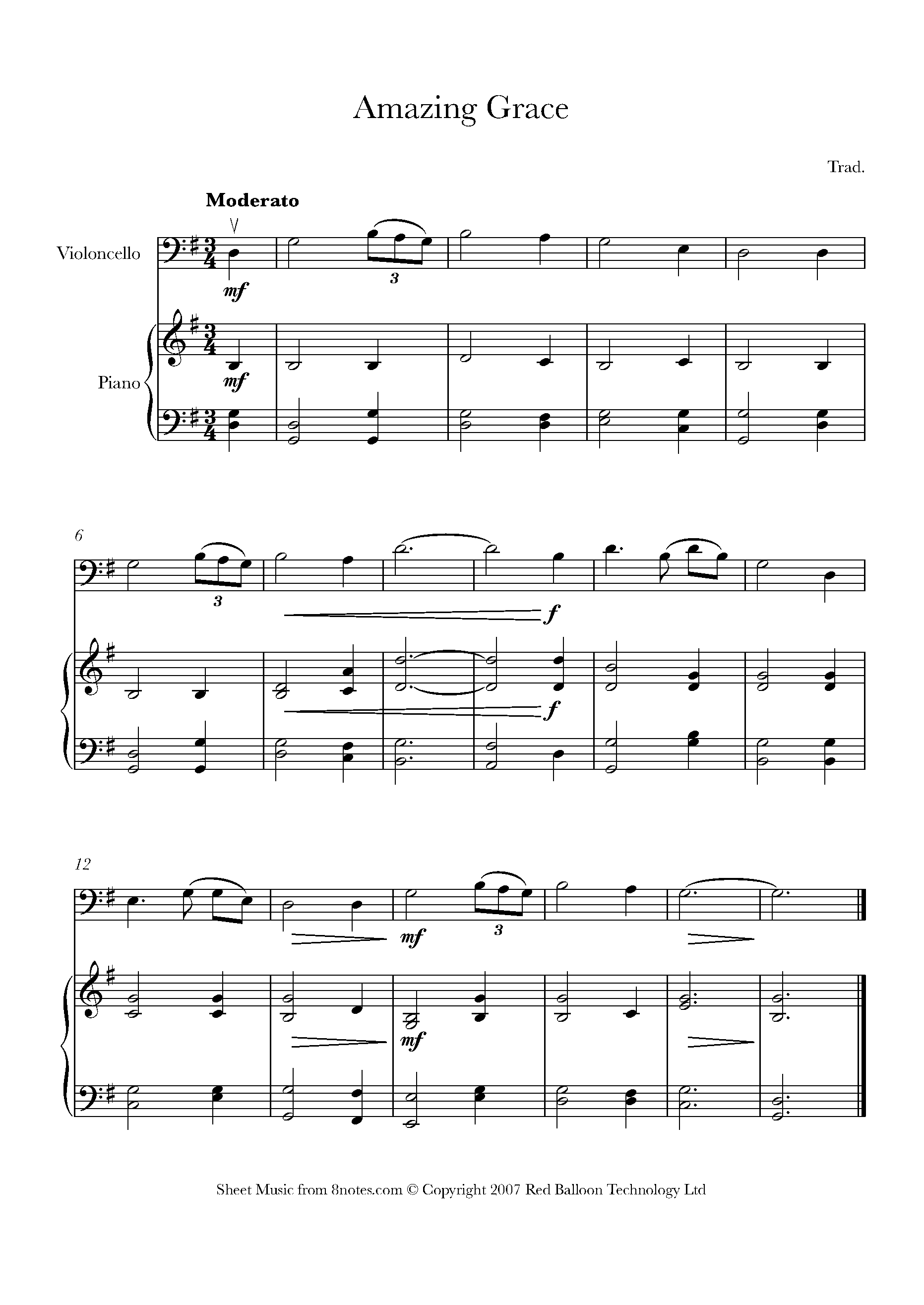
Amazing Grace
Again this should feel as if were being sung, so a warm vibrato and smooth bow changes are essential. Be sure to try playing with the 8notes band backing, it's a lot more fun!
15.
O Holy Night
If you are looking for a seasonal piece that is more interesting than your average carol, O Holy Night, written by French composer and critic Adolphe Adam in 1847 is an excellent choice.
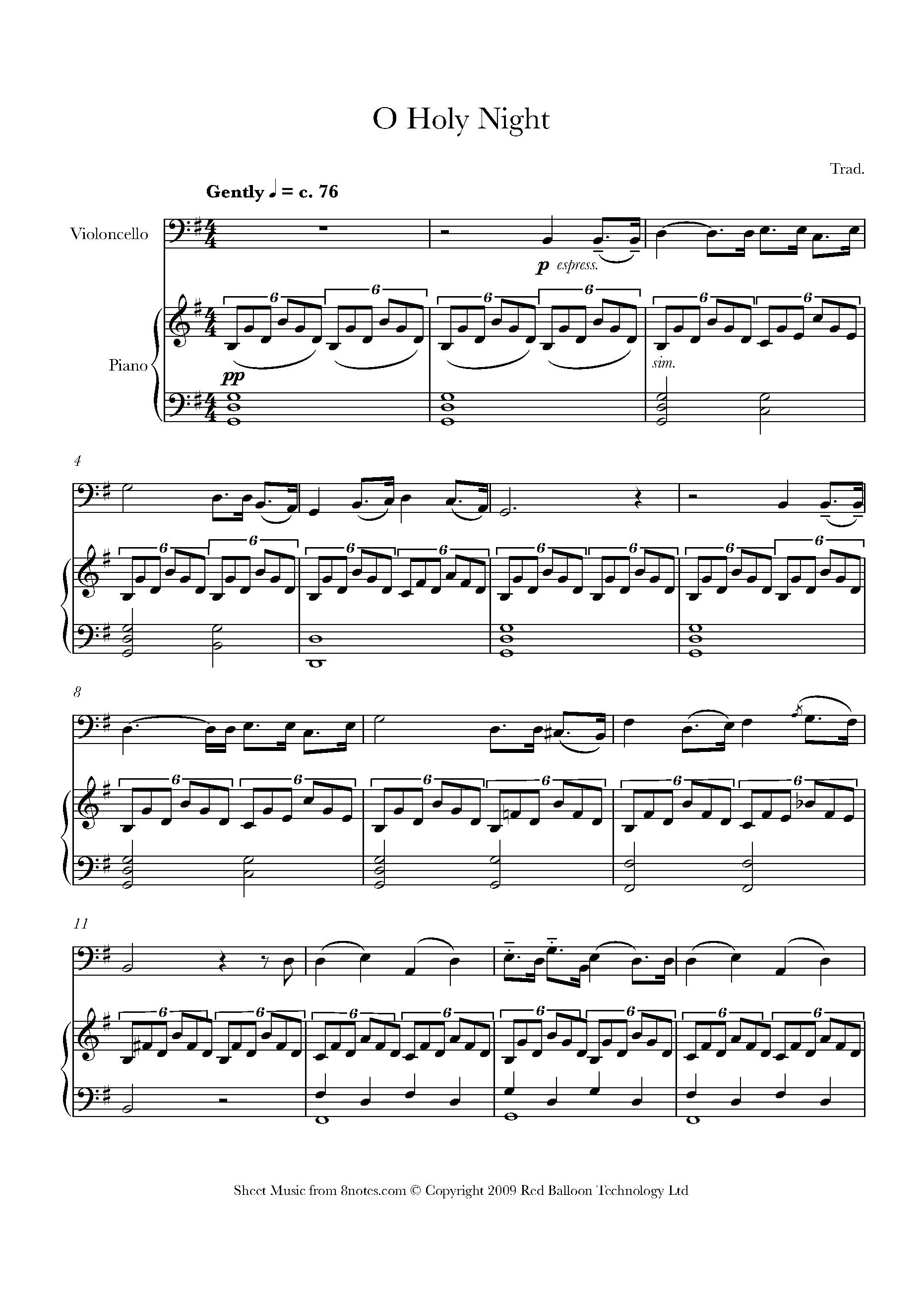
O Holy Night
Though the dynamic shape is indicated, with the high point at bar 37, you might also think of adding your own touches - e.g. the new idea at bar 12 could be emphasised with a louder, warmer sound whilst a crescendo towards bar 20 followed by a diminuendo to bar 23 would also be very effective.
I'm sure there's another really famous cello piece...
You are correct! It is perhaps the most famous of all: the opening movement of Bach's unaccompanied Cello Suite No.1 in G major. It has made countless appearances on television and in the movies, for example in the 2003 blockbuster Master and Commander:
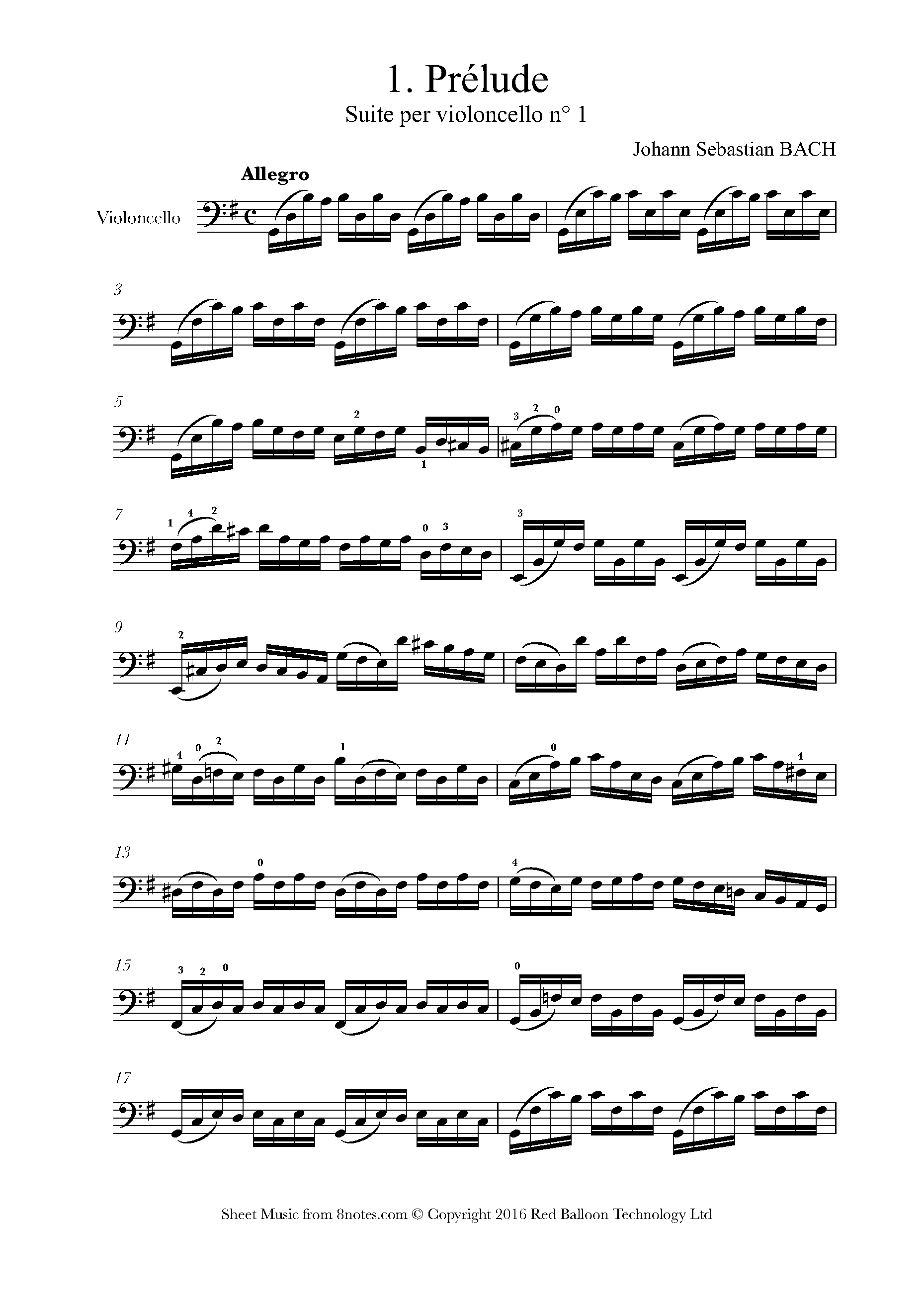
Bach - Cello Suite No.1 in G major, BWV 1007
So why is it not on this list?
Because it is pretty tricky, so perhaps doesn't belong in a collection of easy pieces for cello. At the same time, however, you will be surprised to find that this piece is more approachable than you might have thought, especially the first page, which does not move out of first position.
Do, however, treat the work with the respect it deserves. It's not a warm-up piece to impress your friends! Above all, view it as a long-term goal, something to aspire to, even if you cannot play it now.